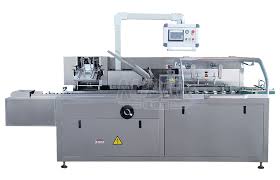Material options for Blister Packaging Machines
Choosing a blister packaging system requires regulatory compliance, as well as a number of packaging options available to ensure product protection. The following guide will break down which materials are suitable for compatibility with the kinds of machines that are used for blister packaging today.
PVC (Polyvinyl Chloride)
In the blister packaging, PVC is the most preferred material and although it is cheap only a few packaging material have PVC in it. From Pharmaceuticals to Small Consumer проducts, this is an excellent choice. PVC films are can be thermoformed at low temperatures and offer good barrier properties offering protection to the contents from the moisture, contamination etc. PVC blister packaging usually comes in thicknesses of 0.2 to 0.3 mm, balancing between having a stiff structure and flexibility.
Polyvinylidene Chloride -PVDC
PVDC-coated films — For products that demand high moisture and gas barrier properties, PVDC-coated films are among the best options. PVDC offers five times the protection of regular PVC: perfect for those valuable pharmaceuticals and end-of-line products. These thicknesses can usually be valued from 40 to 90 grams per square meter based on the barrier level needed from these coatings.
Arpol (Copolymer of a Crystalline Terpolymer of Tetrafluoroethylene # Hexa fluoroethy to COP and Hexafluoropropylene)
Compared to other barrier materials like PVC and PVDC, Aclar provides superior moisture and gas barrier properties. It is a high-barrier material that is commonly used for very moisture sensitive and/or oxygen sensitive pharmaceutical products. While pricey, Aclar makes sense for more costly products that can benefit from an extended shelf life.

Aluminum Foil
Aluminum foil tends to make a full barrier next to light-weight and air and dampness, so is a fantastic for the again of blister packs, even though getting quite a few other pros. Completely recyclable, suitable for sustainability objectives. Blister packing uses a foil thickness of between 0.02 – 0.03 mm offering strong protective properties while remaining extremely light-weight.
COC (Cyclic Olefin Copolymers) — These resins can be used to be E-beam sterilized.
Its superb moisture barrier and chemical resistance, as well as its clarity, is one of the reasons COC materials have seen such an uptake in the pharmaceutical sector. These materials are also excavate for products which demand high visibility through the pack but expect that a strong protective barrier is necessary to starve off the contents of the pack. COC serves as more environmentally friendly packaging solutions than PVC
PLA (Polylactic Acid)
With industries making a greater push toward sustainability, corn starch-based biodegradable plastics like PLA are becoming a more versatile material for blister packaging. PLAMost suitable for :Short shelf-life products in pharmaceutical, medical and consumer goods industries It also provides acceptable barrier properties which unfortunately significant lowers the environmental potential followed by a biodegradability claim as well.
The right material selection is central to the success achieved by any blister packaging machine service[…] Different packaging needs are served by each of these materials, with the consequence that there is always something to suit in terms of overall protection, typically of a product, regulatory compliance, and the marketability of a packaged product. Innovative Continue to Enhance Blister Packaging Blister packaging technologies have developed and will further develop in the near future with running on blister pack machines.

